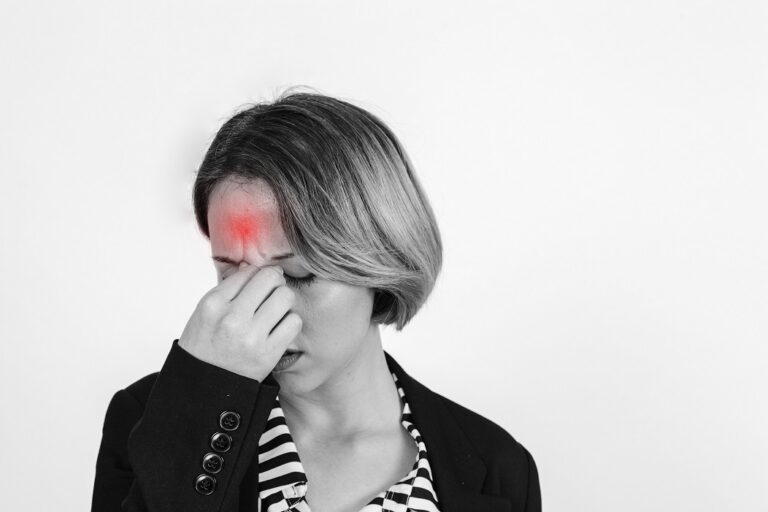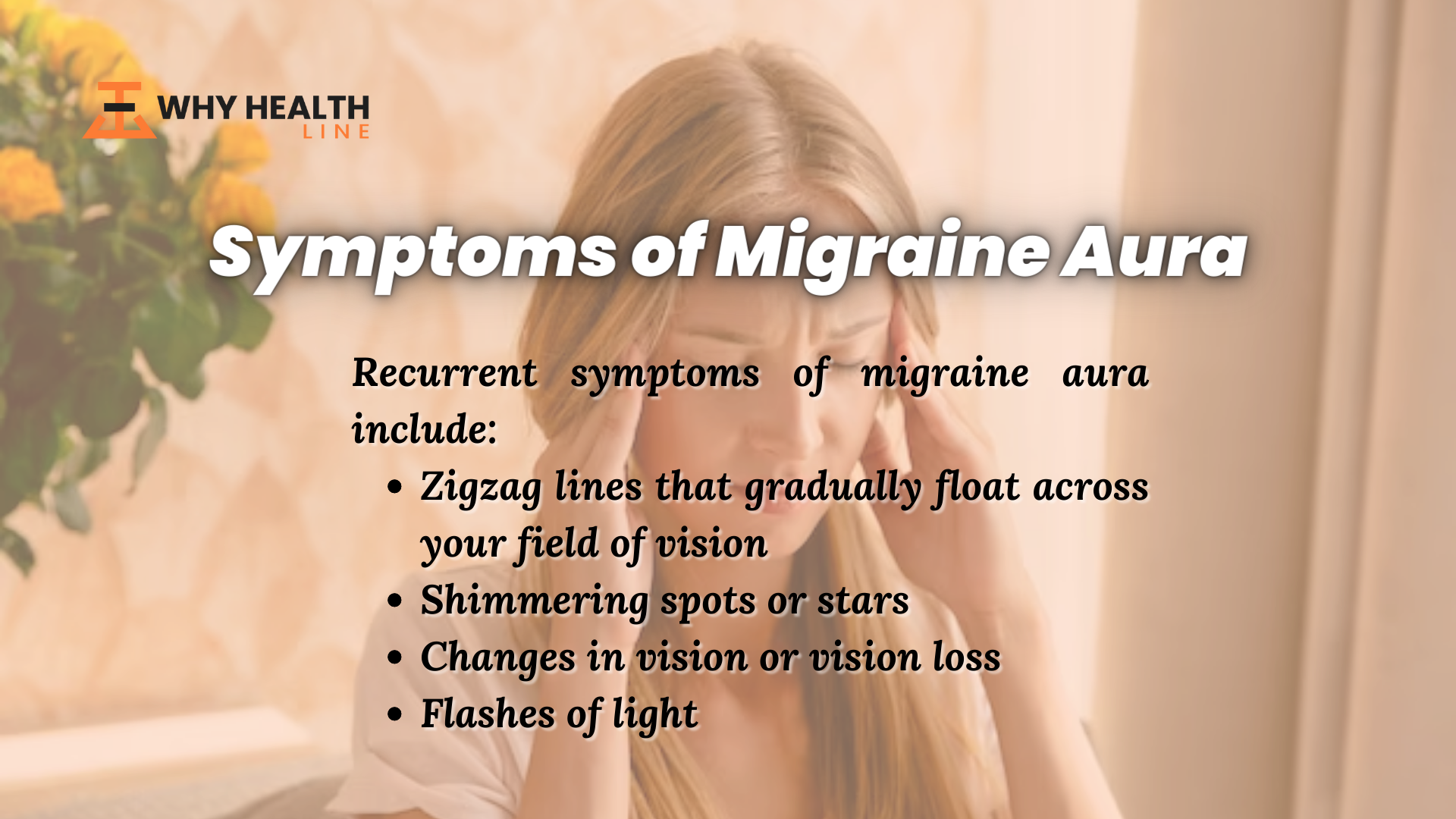
Migraine is a neurological condition that is commonly characterized by a moderate to severe headache. It affects millions of people worldwide. In addition to a headache, typical migraine symptoms may also include nausea, vomiting, and sensitivity to light.
Sometimes, before or during a migraine attack, certain individuals may encounter visual or sensory disruptions. These disruptions are referred to as an aura that usually occurs prior to a migraine headache, affecting one’s vision, hearing, or speech abilities.
If you’re dealing with a migraine aura, then keep reading. This article aims to shed some light on this neurological issue, including its potential triggers and available treatments.
What Is a Migraine Aura?
A migraine with aura also referred to as classic migraine, is a recurring headache that strikes after or at the same time during a migraine attack as sensory disturbances. They usually include issues like blind spots, flashes of light, and changes in vision or tingling sensations in the hand or face.
What Are the Different Types of Migraine Aura?
Experiencing migraine aura can be alarming due to the different types and intensities of sensory changes that may occur. Identifying the specific type of migraine can provide a better understanding of the symptoms, including aura, that may occur during an attack.
Migraine with aura can be characterized into the following different types:
- Visual.
- Sensory.
- Speech and/or language.
- Motor (aka hemiplegic migraine).
- Migraine with brainstem aura.
- Retinal migraine.
What Causes Migraine Aura?
The onset of migraine aura is usually caused by the same factors that trigger migraine without aura. Some common causes might include:
- Bright lights.
- Certain foods or medications.
- Stress.
- Sleep disturbances.
- Periods.
Symptoms of Migraine Aura
Recurrent symptoms of migraine aura include:
- Flashes of bright lights.
- Foggy or blurry vision.
- Zigzag lines.
- Blind spots (scotoma).
- Partial loss of vision.
- Small bright dots.
- Colored spots.

How Is Migraine Aura Diagnosed?
When diagnosing migraine aura, your healthcare provider will conduct a physical examination to rule out more severe conditions like transient ischemic attack (TIA) or mini-stroke. They may also conduct specific tests to confirm the diagnosis.
These tests include an eye exam to eliminate any eye conditions that could be causing aura symptoms. Other diagnostic tests include a computed tomography (CT) scan of your head that can provide detailed brain images. And a magnetic resonance imaging (MRI) test that uses magnets and radio waves to capture images of your internal body organs.
Treatment of Migraine Aura
The available treatment choices for migraine with aura are similar to those for other forms of migraines. The decision on which treatment to go for entirely depends on how often and how intense a person’s symptoms are. Depending on the severity of migraine aura, there are various medications to consider, such as:
- Antidepressants.
- Blood pressure medications.
- Anti-seizure drugs.
Can I Prevent Migraine Aura?
If you suffer from migraine with aura, it may be helpful to talk to your doctor about taking a magnesium oxide supplement. You can also find magnesium in foods such as nuts and leafy greens. Vitamin B2, or riboflavin, has also been shown to reduce the frequency of migraine attacks.
Various techniques such as meditation, relaxation, breathing exercises, and mental health therapy may also be beneficial for people with migraine aura issues.
Key Takeaway
Experiencing a migraine with aura involves disturbances in vision, sensation, or speech. It can happen before or during a migraine attack and usually lasts less than an hour. It’s possible for some people to have an aura without a migraine headache.
A combination of medications can help manage migraine with aura or can also help prevent migraine symptoms from occurring.
However, if the migraine aura attacks become recurrent or severe, then doctors usually prescribe other medications. That can help relieve acute symptoms during an attack.
Moreover, it’s essential to note that aura symptoms can resemble more severe conditions like a stroke or seizure.
If you are experiencing migraine with aura for the first time and are feeling numbness on one side of your body or having trouble speaking, it is important to seek medical attention right away.
FAQs:
Is Migraine Aura Serious?
These headaches are quite painful and discomforting but are not considered life-threatening or extremely dangerous. However, in some rare cases, migraine aura can have symptoms that resemble serious conditions like a stroke.
Can You Experience Migraine Aura Without the Headache?
Some people can suffer from migraine aura without a headache which is also referred to as silent migraine. Even without having head pain, migraine aura without headache can still be debilitating for those who experience it.
Is a Migraine Aura Without a Headache a Stroke Risk?
It has not been proven yet that a migraine aura without a headache causes a stroke. However, if you experience a migraine with aura, your risk of stroke may slightly increase.
In some cases, both migraine and stroke can occur in the brain, and the symptoms of a migraine can sometimes resemble those of a stroke.